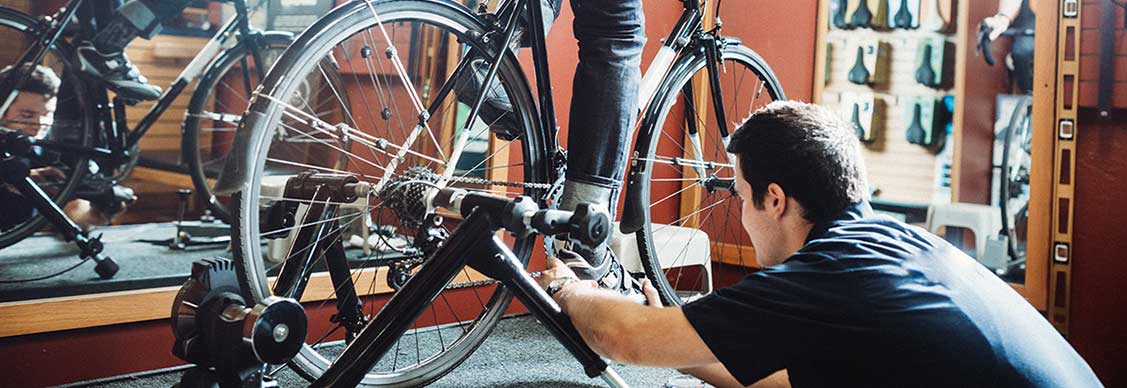How retailers are drawing customers back to stores
Retailers are elevating the in-store experience to lure eager Gen Z shoppers
With e-commerce becoming ever-more dominant, retailers have been pulling out all the stops to woo customers to physical stores.
One strategy has been gaining steam: offering unique in-person experiences that cannot be replicated online.
Take winter apparel brand Canada Goose, which created a “Cold Room” in its Boston store for customers to test out their parka jackets at temperatures as low as -27 degrees Fahrenheit.
In China at fashion retailer ENG’s Shanghai store, customers are greeted by holographic projections, and are free to shop from 24/7 sneaker vending machines. Customers at the stores of electronic music instrument manufacturer Roland can tune the audio, video, and lighting to their liking with the press of a button.
The experiential retail concept had become hugely important for retailers and mall landlords well before the pandemic. But given the impact on shopping over the past two years, retailers are having to experiment with new solutions to drive and maintain footfall.
“The demand for physical shops is expected to go through a series of significant structural changes, with a skew toward heavy leisure and experiential retail,” says Justin Yu, Research Analyst at JLL Hong Kong.
Looking for more insights? Never miss an update.
The latest news, insights and opportunities from global commercial real estate markets straight to your inbox.
This is because experiential offerings are increasingly influencing customers’ decisions on where to shop. In a survey by technology firm Epson, up to 75 percent of respondents indicated a willingness to change their shopping behavior if retail outlets offered more immersive or experiential elements.
There are also signs that such efforts are being rewarded. Experiential indoor sports and auto showrooms contributed to stronger retail leasing momentum in Shanghai for the third quarter of 2021, according to the latest JLL Asia Pacific Retail Digest.
“Some consumers still prefer the physical shop experience which can’t be replaced by an online transaction,” says Yu. “We expect to see more experiential retailers, which offer real-life experience while integrating retail business opportunities, to join the retail scene.”
What Gen Z wants
Younger shoppers, especially Gen Z, are cozying up to the idea of shopping in-store instead of online, with a majority inclined to shop in places with experiential elements. Up to 81 percent of Gen Z consumers like to purchase in-store, and most of them also prefer visiting stores for discovering and trialling new products, according to management consultancy Kearney.
Sporting goods retailer Decathlon is one brand that has embraced the in-store experience. The retailer’s Experience Stores allow customers to "discover, touch, try and feel" its products and services, with dedicated spaces for trying out different sports equipment, and with experiences such as virtual reality test zones that simulate camping.
Some retailers have adopted a more personalized approach. At Selfridges’ high-end department store in London, customers can choose from a variety of activities arranged by an “Experience Concierge” including wine and food tastings, glow-up sessions, and even skateboarding lessons.
Online retailers that recognized this trend have likewise ventured into the brick-and-mortar space. For instance, e-commerce retailer Lazada set up a pop-up physical store in Singapore to offer a retail experience targeted at homeowners. The store served as a showroom for smart home integration, with all products available for purchase on the Lazada app.
To complement its online business, fashion retailer Love, Bonito also opened physical stores with social-ready photo backdrops, an express counter for e-commerce orders, and on-demand personal stylists to enhance the retail experience.
Regardless of a brand’s in-store and online offerings, Gen Z consumers expect reliability and consistency whether they shop in-store, through an app, or on a website, according to research from IBM. This means retailers who successfully leverage technology to integrate the offline and online worlds into a seamless retail experience will gain a competitive edge, according to JLL’s Asia Pacific Outlook 2022 report.
Pandemic recovery key to success
Better in-store experiences will be instrumental in reviving retail, but the concept’s success ultimately hinges on the recovery from the pandemic, says Roddy Allan, Chief Research Officer, JLL Asia Pacific.
For instance, in the Asia Pacific region, he notes that business sentiment in some markets remains subdued due to restrictions including social distancing measures, mandatory quarantine requirements and limited international tourism arrivals.
Still, he believes there is cause for optimism.
“The increasing vaccination rates and easing of pandemic travel restrictions will bolster market recovery although the threat of future potential outbreaks still lingers,” says Allan.
Contact Roddy Allan
Chief Research Officer, JLL Asia PacificWhat’s your investment ambition?
Uncover opportunities and capital sources all over the world and discover how we can help you achieve your investment goals.
